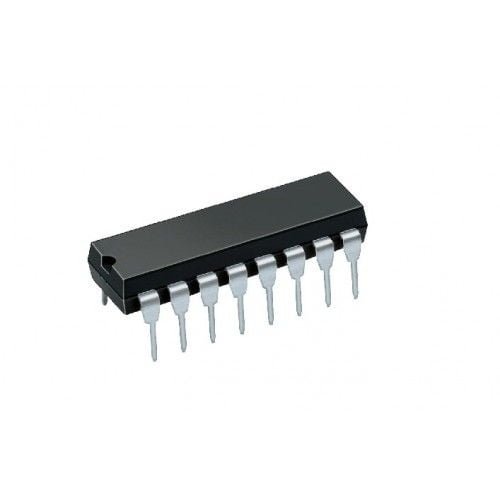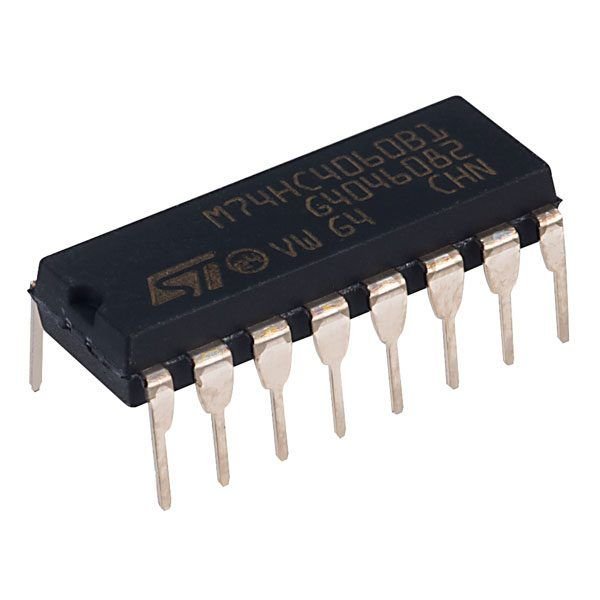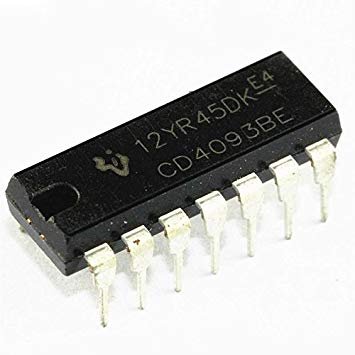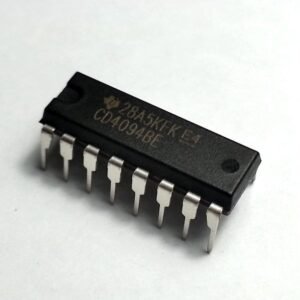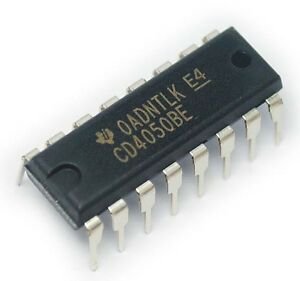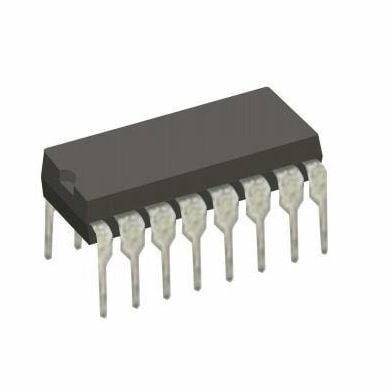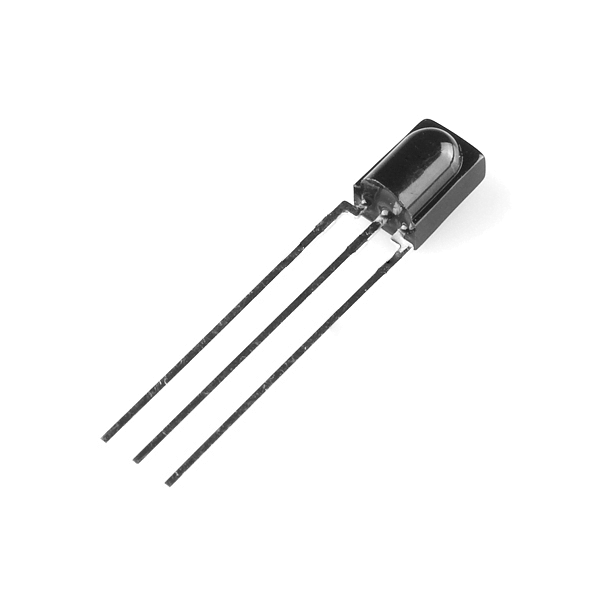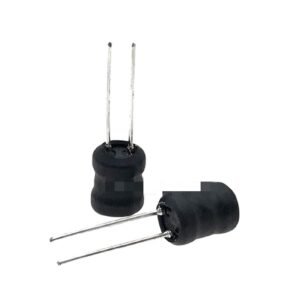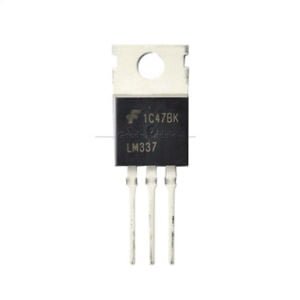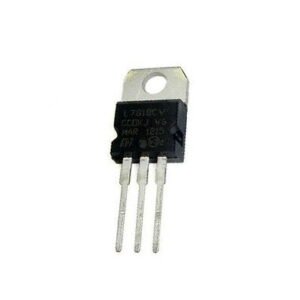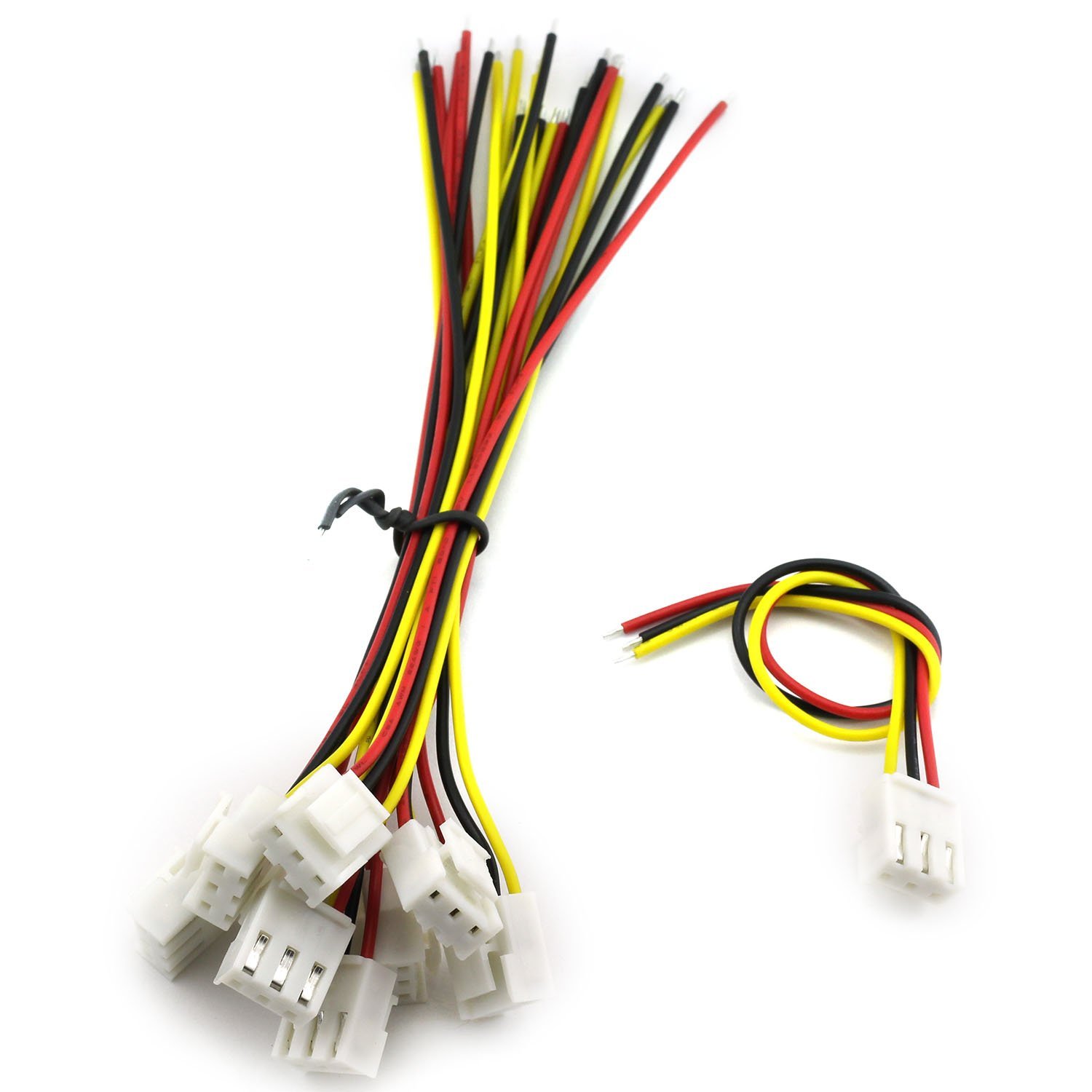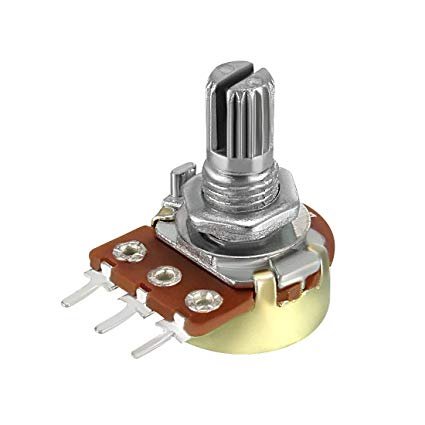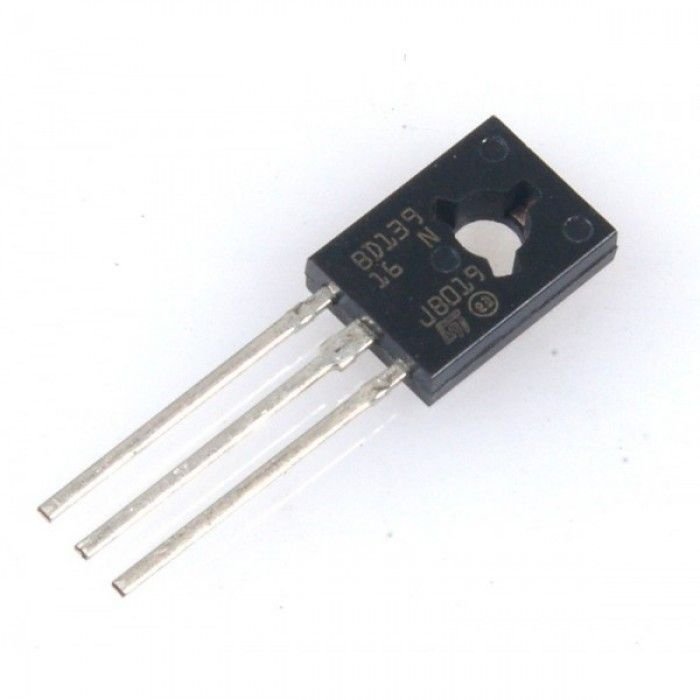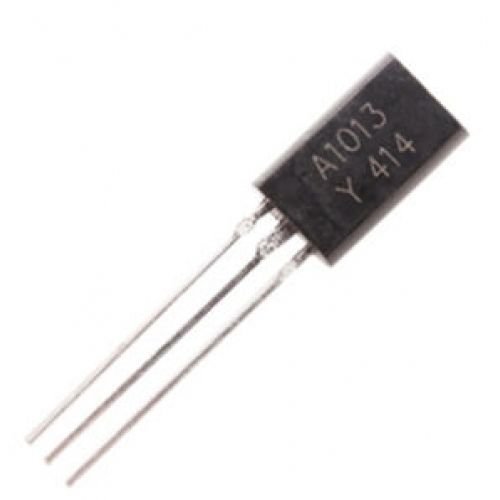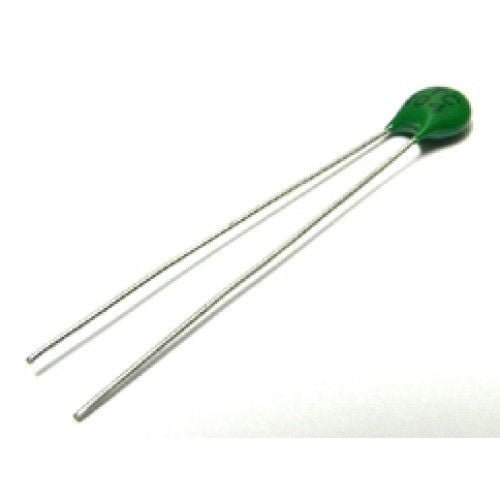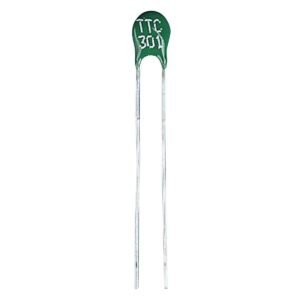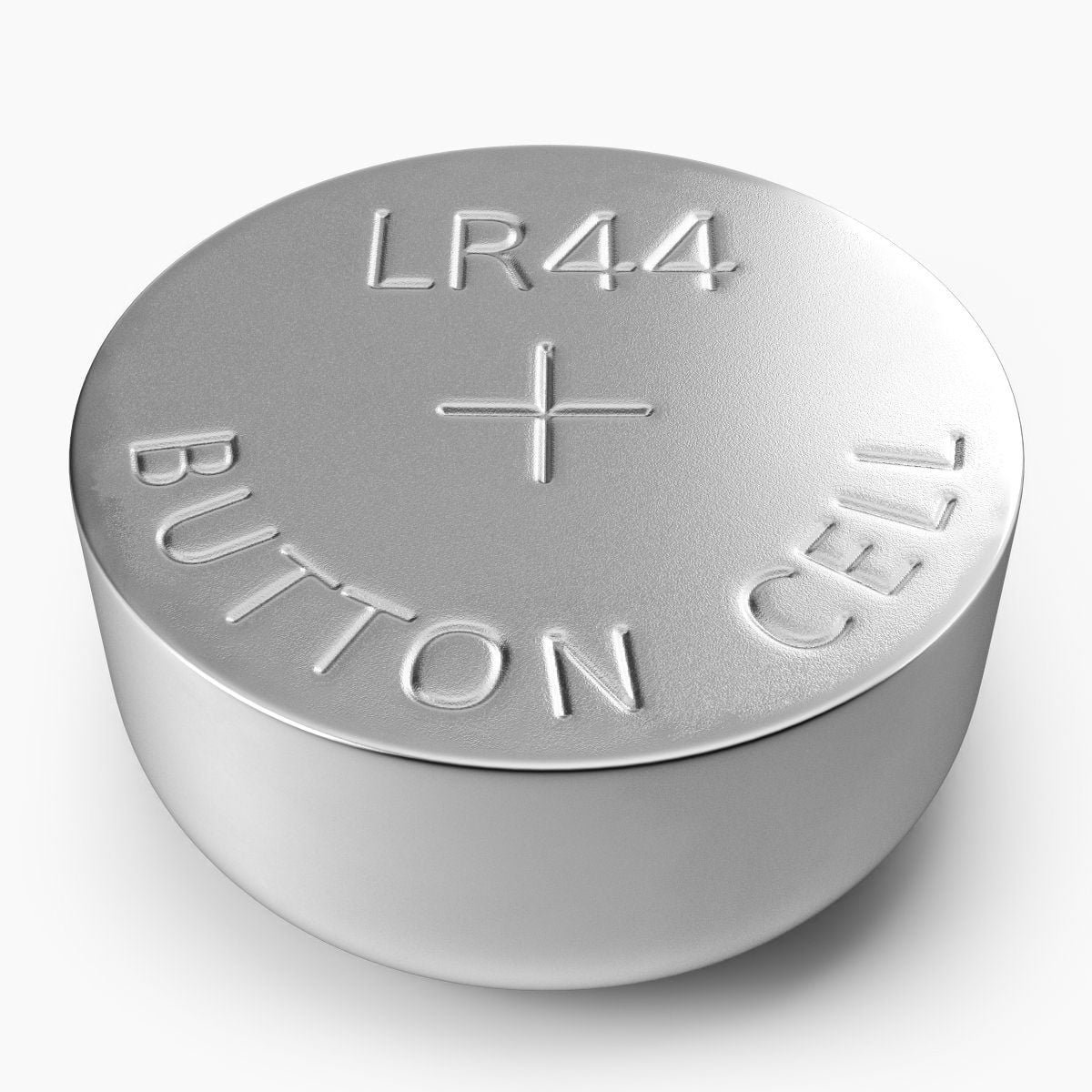-
A DC jack is an electrical connector for supplying direct current power.
-
This is a monostable multivibrator or pulse generator.
-
- Lithium Coin Cell
- Nominal Voltage: 3.0 Volts
- Maximum Current: 0.19A
- Non – Rechargeable Disposal battery
- Typical Capacity: 240 mAh @ 20C 15k Load
- Service Life: ~720 Hrs @20C 15k Load
- Typical Weight: 3.0 grams (0.10 oz.)
- Operating Temp: -30C to 60C
- Self-Discharge: ~1% / year
-
Soldering Flux for cleaning of iron bit.
-
CR1220 3V LITHIUM COIN CELL BATTERY
Original price was: ₨41.00.₨33.00Current price is: ₨33.00. Quick View- Durable
- High Quality
- Long Battery Performance
- Model CR1220
- Lithium Battery
- Common for Watch, Calculator Camera. Toy and other
- Packing May Changed
- Button Cell
-
The MC34063A Series is a monolithic control circuit containing the primary functions required for dc-to-dc converters. These Buck Boost Inverting Switching Regulators consist of an internal temperature compensated reference, comparator, controlled duty cycle oscillator with an active current limit circuit, driver and high current output switch. Operation from 3.0 V to 40 V Input. Output Switch Current to 1.5 A.
-
- Standard Socket: E10
- Lamp Type: Incandescent Lamp
- Size: 24*11mm
- Colour temperature: Yellow
- Polarity: No
-
- USB connectors are made with silver flashed brass contacts.
- Ideal for making your own USB cables.
- Fit for electronics power port repair or DIY projects power supply port.
- Soldering is required.
-
- High Speed Binary Ripple Carry Counter
- Separate Reset Input Pin
- Wide Operating Voltage Range: 2.0 to 6.0 V
- Output Drive up to 10 LS-TTL Loads
- Equivalent to CD4060
-
- Operating Voltage: 5V, 10V, 15V DC
- Maximum Input Current: 1uA
- Hysteresis Voltage Typically 0.9 V at VDD: 5 V and 2.3 V at VDD: 10 V
- Noise Immunity Greater Than 50%
- Unlimited input rise and fall times
-
- High Voltage Type (20V Rating)
- 3-State Parallel Outputs for Connection to Common Bus
- Separate Serial Outputs Synchronous to Both Positive and Negative Clock Edges for Cascading
- Medium Speed Operation – 5MHz at 10V (typ)
- Quiescent Current at 20V
- Maximum Input Current of 1A at 18V Over Full Package Temperature Range; 100nA at 18V and +25oC
- Noise Margin (Over Full Package/Temperature Range) – 1V at VDD = 5V – 2V at VDD = 10V – 2.5V at VDD = 15V
- 5V, 10V and 15V Parametric Ratings
-
The CD4050 hex buffers are monolithic complementary MOS (CMOS) integrated circuits constructed with N- and P-channel enhancement mode transistors. These devices feature logic level conversion using only one supply voltage (VDD). The input signal high level (VIH) can exceed the VDD supply voltage when these devices are used for logic level conversions. These devices are intended for use as hex buffers, CMOS to DTL/ TTL converters, or as CMOS current drivers, and at VDD = 5.0V, they can drive directly two DTL/TTL loads over the full operating temperature range.
-
Single row male pin header for PCBs and veroboard.
-
A terminal block is a screw type electrical connector where the wires are clamped down to a metal part by a screw. This is a 2 pin terminal block.
-
The 74LS139 is a high speed Dual 1-of-4 Decoder/De-multiplexer. The device has two independent decoders, each accepting two inputs and providing four mutually exclusive active LOW Outputs. Each decoder has an active LOW Enable input which can be used as a data input for a 4-output demultiplexer. Each half of the LS139 can be used as a function generator providing all four minterms of two variables. The LS139 is fabricated with the Schottky barrier diode process for high speed and is completely compatible with all Motorola TTL families.
-
- Very low supply current
- Photodetector and preamplifier in one package
- Internal filter for PCM frequency
- Improved shielding against EMI
- Supply voltage: 2.5 V to 5.5 V
- Improved immunity against ambient light
- Insensitive to supply voltage ripple and noise
-
- Brand: Generic
- Inductance: 10 uH
- Size: 6 x 8 mm (Diameter x Height)
- Pin length: 14 mm
- Lead Diameter: 0.6 mm
- Rated current: 1A
- Tolerance: 10 %
- Turns: 18.5 TS
-
- Product Name: Color Ring Inductor
- Power: 1/4W
- Inductance: 150uH
- Inductance Tolerance: ±10%
- Material: Epoxy Resin, Metal, Inductor
- Mounting Type: Through Hole
- Package / Case: Axial Leaded
- Body Size: 2.5x7mm
- Lead Diameter: 0.5mm
- Total Length: 6cm
-
- Operates from single 5V supply
- Input current: 150 nA max. over temperature
- Offset current: 20 nA max. over temperature
- Differential input voltage range: 30V
- Power consumption: 135 mW at 15V
- Available in Q-Temp Automotive
- High-Reliability Automotive Applications
- Configuration Control and Print Support
- Qualification to Automotive Standards
-
Buy low price, high quality4 position terminal block.
-
LM-337 LM337 Variable Negative -VE Voltage Regulator IC
Original price was: ₨65.00.₨39.00Current price is: ₨39.00. Quick View- Used for Positive voltage regulations
- Variable power supply
- Current limiting circuits
- Reverse polarity circuits
- Commonly used in Desktop PC, DVD and other consumer products
- Used in motor control circuits
-
- Input Voltage range: 8V to 25V
- Output Voltage: 5.75V(min) – 6.25V(max)
- Output Current: 1A
- Peak current: 2.2A
- Operating Temperature : 0 to +125 C
- Polarity: Positive
-
- 9V Positive Voltage Regulator
- Minimum Input Voltage is 11V
- Maximum Input Voltage is 35V
- Output Current: 1.5 A
- PSRR / Ripple Rejection: 55 dB
- Output Type: Fixed
- Internal Thermal Overload and Short circuit current limiting protection is available.
- Junction Temperature maximum of 125 degree Celsius
- Available in TO-220, TO-3 and KTE package
-
7812 is a 12V Voltage Regulator that restricts the voltage output to 12V and draws 12V regulated power supply. The 7812 is the most common, as its regulated 12-volt supply provides a convenient power source for most TTL components. Output Voltage:12V. Output Current:1A. Input Voltage: 14.6 – 35VDC.
-
- 5V Negative Voltage Regulator
- Output Voltage: -5V
- Output Current: 1.5A
- Minimum Input Voltage is 7V
- Maximum Input Voltage is 25V
- Operating current(IQ) is 5mA
- Internal Thermal Overload and Short circuit current limiting protection is available.
- Junction Temperature maximum 125 degree Celsius
- Available in TO-220 and KTE package
-
- 12V Negative Voltage Regulator
- Minimum Input Voltage is -14.5V
- Maximum Input Voltage is -27V
- Peak Output Current is 2.2A
- Average Output Current is upto 1A
- Internal Thermal Overload and Short circuit current limiting protection is available.
- Available in TO-220 package only.
-
- Output voltage tolerances of ±2% at Tj = 25˚C and ±4% over the temperature range (LM340A)
- Line regulation of 0.01% of VOUT/V of ∆VIN at 1A load (LM340A)
- Load regulation of 0.3% of VOUT/A (LM340A)
- Internal thermal overload protection
- Internal short-circuit current limit
- Output transistor safe area protection
- P+ Product Enhancement tested
-
- 24V Positive Voltage Regulator
- Minimum Input Voltage is 33V
- Maximum Input Voltage is 40V
- Output Current: 1.5 A
- Internal Thermal Overload and Short circuit current limiting protections are available.
- Junction Temperature maximum of 125 degree Celsius
- Available in TO-220, TO-3 and KTE package
-
- Ultra Low Power Consumption 0.7 μA
- Wide Range of Supply Voltages 2V to 8V
- Input Common-Mode Range Beyond V+ and V−
- Open Collector and Push-Pull Output
- High Output Current Drive: (@ VS = 5V) 45 mA
- Propagation Delay (@ VS = 5V, 10 mV Overdrive) 25 μs
- Tiny 5-Pin SOT-23 Package
- Latch-up Resistance >300 mA
- LMC7215-Q1 is an Automotive Grade Product that is AEC-Q100 Grade 3 Qualified.
-
- Technology Family: CD4000
- VCC (Min) (V): 3
- VCC (Max) (V): 18
- Channels (#): 4
- Inputs per channel: 2
- IOL (Max) (mA): 6.8
- IOH (Max) (mA): -6.8
- Input type Standard: CMOS
- Output type: Push-Pull
- 5V–10V–15V parametric ratings
- Symmetrical output characteristics
- Speed: (tpd > 50ns)
- Data rate (Max) (Mbps): 8
- Rating: Catalog
- Operating temperature range (C): -55 to 125
-
3 Pin Crimp Shell Wire | Straight Connector pair
Original price was: ₨65.00.₨39.00Current price is: ₨39.00. Quick ViewThis is a simple three wire cable. Great for jumping from board to board or just about anything else.
-
Mini Piezo Buzzer Mini PCB Mount
Original price was: ₨50.00.₨39.00Current price is: ₨39.00. Quick View- Operation Voltage: 3-5V DC
- Current: <25mA
- SPL: 85dBA/10cm
- Frequency: 2,300Hz
- Color: Black
- Operating Temperature: – 20C to +65C
- Weight: 2.4 gram
- Size: 1.2cm diameter x 1cm tall (0.47″ x 0.39″)
- Pin Spacing: 7.6mm
-
A potentiometer is a manually adjustable variable resistor with 3 terminals. Two terminals are connected to both ends of a resistive element, and the third terminal connects to a sliding contact, called a wiper, moving over the resistive element. The position of the wiper determines the output voltage of the potentiometer. The potentiometer essentially functions as a variable voltage divider. The resistive element can be seen as two resistors in series(potentiometer resistance), where the wiper position determines the resistance ratio of the first resistor to the second resistor. A potentiometer is also commonly known as a potentiometer or pot. The most common form of potmeter is the single turn rotary potmeter. This type of pot is often used in audio volume control (logarithmic taper) as well as many other applications. Different materials are used to construct potentiometers, including carbon composition, cermet, wirewound, conductive plastic or metal film.
-
A potentiometer is a manually adjustable variable resistor with 3 terminals. Two terminals are connected to both ends of a resistive element, and the third terminal connects to a sliding contact, called a wiper, moving over the resistive element. The position of the wiper determines the output voltage of the potentiometer. The potentiometer essentially functions as a variable voltage divider. The resistive element can be seen as two resistors in series(potentiometer resistance), where the wiper position determines the resistance ratio of the first resistor to the second resistor. A potentiometer is also commonly known as a potentiometer or pot. The most common form of potmeter is the single turn rotary potmeter. This type of pot is often used in audio volume control (logarithmic taper) as well as many other applications. Different materials are used to construct potentiometers, including carbon composition, cermet, wirewound, conductive plastic or metal film.
-
A potentiometer is a manually adjustable variable resistor with 3 terminals. Two terminals are connected to both ends of a resistive element, and the third terminal connects to a sliding contact, called a wiper, moving over the resistive element. The position of the wiper determines the output voltage of the potentiometer. The potentiometer essentially functions as a variable voltage divider. The resistive element can be seen as two resistors in series(potentiometer resistance), where the wiper position determines the resistance ratio of the first resistor to the second resistor. A potentiometer is also commonly known as a potentiometer or pot. The most common form of potmeter is the single turn rotary potmeter. This type of pot is often used in audio volume control (logarithmic taper) as well as many other applications. Different materials are used to construct potentiometers, including carbon composition, cermet, wirewound, conductive plastic or metal film.
-
A potentiometer is a manually adjustable variable resistor with 3 terminals. Two terminals are connected to both ends of a resistive element, and the third terminal connects to a sliding contact, called a wiper, moving over the resistive element. The position of the wiper determines the output voltage of the potentiometer. The potentiometer essentially functions as a variable voltage divider. The resistive element can be seen as two resistors in series(potentiometer resistance), where the wiper position determines the resistance ratio of the first resistor to the second resistor. A potentiometer is also commonly known as a potentiometer or pot. The most common form of potmeter is the single turn rotary potmeter. This type of pot is often used in audio volume control (logarithmic taper) as well as many other applications. Different materials are used to construct potentiometers, including carbon composition, cermet, wirewound, conductive plastic or metal film.
-
A potentiometer is a manually adjustable variable resistor with 3 terminals. Two terminals are connected to both ends of a resistive element, and the third terminal connects to a sliding contact, called a wiper, moving over the resistive element. The position of the wiper determines the output voltage of the potentiometer. The potentiometer essentially functions as a variable voltage divider. The resistive element can be seen as two resistors in series(potentiometer resistance), where the wiper position determines the resistance ratio of the first resistor to the second resistor. A potentiometer is also commonly known as a potentiometer or pot. The most common form of potmeter is the single turn rotary potmeter. This type of pot is often used in audio volume control (logarithmic taper) as well as many other applications. Different materials are used to construct potentiometers, including carbon composition, cermet, wirewound, conductive plastic or metal film.
-
A potentiometer is a manually adjustable variable resistor with 3 terminals. Two terminals are connected to both ends of a resistive element, and the third terminal connects to a sliding contact, called a wiper, moving over the resistive element. The position of the wiper determines the output voltage of the potentiometer. The potentiometer essentially functions as a variable voltage divider. The resistive element can be seen as two resistors in series(potentiometer resistance), where the wiper position determines the resistance ratio of the first resistor to the second resistor. A potentiometer is also commonly known as a potentiometer or pot. The most common form of potmeter is the single turn rotary potmeter. This type of pot is often used in audio volume control (logarithmic taper) as well as many other applications. Different materials are used to construct potentiometers, including carbon composition, cermet, wirewound, conductive plastic or metal film.
-
500K Ohm Rotary Potentiometer / Variable Resistor
Original price was: ₨50.00.₨39.00Current price is: ₨39.00. Quick View500K Ohm Rotary Potentiometer / Variable Resistor is a manually adjustable variable resistor with 3 terminals. Two terminals are connected to both ends of a resistive element, and the third terminal connects to a sliding contact, called a wiper, moving over the resistive element. The position of the wiper determines the output voltage of the potentiometer. The potentiometer essentially functions as a variable voltage divider. The resistive element can be seen as two resistors in series(potentiometer resistance), where the wiper position determines the resistance ratio of the first resistor to the second resistor. A potentiometer is also commonly known as a potentiometer or pot. The most common form of potmeter is the single turn rotary potmeter. This type of pot is often used in audio volume control (logarithmic taper) as well as many other applications. Different materials are used to construct potentiometers, including carbon composition, cermet, wirewound, conductive plastic or metal film.
-
1M Ohm Rotary Potentiometer / Variable Resistor
Original price was: ₨50.00.₨39.00Current price is: ₨39.00. Quick View1M Ohm Rotary Potentiometer / Variable Resistor is a manually adjustable variable resistor with 3 terminals. Two terminals are connected to both ends of a resistive element, and the third terminal connects to a sliding contact, called a wiper, moving over the resistive element. The position of the wiper determines the output voltage of the potentiometer. The potentiometer essentially functions as a variable voltage divider. The resistive element can be seen as two resistors in series(potentiometer resistance), where the wiper position determines the resistance ratio of the first resistor to the second resistor. A potentiometer is also commonly known as a potentiometer or pot. The most common form of potmeter is the single turn rotary potmeter. This type of pot is often used in audio volume control (logarithmic taper) as well as many other applications. Different materials are used to construct potentiometers, including carbon composition, cermet, wirewound, conductive plastic or metal film.
-
Variable resistor 50K Potentiometer / Variable Resistor
Original price was: ₨50.00.₨39.00Current price is: ₨39.00. Quick ViewVariable resistor 50K Potentiometer / Variable Resistor (50K Ohm) is a manually adjustable variable resistor with 3 terminals. Two terminals are connected to both ends of a resistive element, and the third terminal connects to a sliding contact, called a wiper, moving over the resistive element. The position of the wiper determines the output voltage of the potentiometer. The potentiometer essentially functions as a variable voltage divider. The resistive element can be seen as two resistors in series(potentiometer resistance), where the wiper position determines the resistance ratio of the first resistor to the second resistor. A potentiometer is also commonly known as a potentiometer or pot. The most common form of potmeter is the single turn rotary potmeter. This type of pot is often used in audio volume control (logarithmic taper) as well as many other applications. Different materials are used to construct potentiometers, including carbon composition, cermet, wirewound, conductive plastic or metal film.
-
- Plastic casing NPN Transistor
- Continuous Collector current (IC) is 1.5A
- Collector-Emitter voltage (VCE) is 80 V
- Collector-Base voltage (VCB) is 80V
- Base Current (Ib) is 0.5A
- Emitter Base Breakdown Voltage (VBE) is 5V
- DC current gain (hfe) is 40 to 160
- Available in To-225 package
-
IC sockets are generally for preventing damage to IC’s from soldering and while testing multiple circuits. These are made from Black Thermoplastic and tin-plated alloy contacts. One end is notched to aid in identification. They can be mounted end to end to suit longer IC’s.
-
- Type Designator: 2SA1013
- Material of transistor: Si
- Polarity: PNP
- Maximum collector power dissipation (Pc), W: 0.9
- Maximum collector-base voltage Ucb, V: 160
- Maximum collector-emitter voltage Uce, V: 160
- Maximum emitter-base voltage Ueb, V: 6
- Maximum collector current Ic max, A: 2
- Maksimalna temperatura (Tj), °C: 125
- Transition frequency (ft), MHz: 15
- Collector capacitance (Cc), pF: 35
- Forward current transfer ratio (hFE), min: 60
- Noise Figure, dB: –
-
- Rated power 10mW at 25°C
- R (Ω) at 25°C: 100.0K ± 1%
- B-value 25°-85°C: 4665K ± 1%
- Dissipation Factor: 2
- Thermal Time Constant: 15
- Operating Temperature Range °C: –50°C to +110°C
-
- Voltage: 1.5 volts
- Rechargeable: No
- Replacement for: S76, 357, MS76, RS76, 10L14, RW42, SR44W, G13, G13F, D357, D76, EPX76, F76, GP76, GP57, 8006, 76-A, LR44, A76, RW82, V13GA, 357A
- Compatible with: Compatible watches, electronics and digital equipment
-
A potentiometer is a manually adjustable variable resistor with 3 terminals. Two terminals are connected to both ends of a resistive element, and the third terminal connects to a sliding contact, called a wiper, moving over the resistive element. The position of the wiper determines the output voltage of the potentiometer.


